How to visit Lviv in 3 days

Lviv is the most progressive and artistic city in Ukraine, and the most Ukrainian as well.
From elegant buildings to a European-like, perfectly shaped old city, but also with plenty of Soviet stuff, this is by far, the most tourist-friendly destination in the country.
I spent almost 3 weeks visiting Lviv, mainly because, at that point, I was considering moving there indefinitely, working my way a digital nomad.
And I loved it.
In 3 weeks, I partied in a sadomasochistic bar; visited plenty of quirky, Soviet buildings; tasted countless types of craft beer; had some of the best coffee in Europe; and learned so much about the real, non-Russian-influenced Ukrainian culture.
Plus Lviv is damn cheap.
In this guide, I want you to learn how to visit Lviv and do all of that in a 3-day itinerary, with Lviv travel tips included.
For all the practical information to visit Ukraine (visas, budget and travel tips) read my generic travel guide.

In this Lviv travel guide you will find:
Table of Contents
our recommended travel insurance for Ukraine
IATI Insurance is the most versatile insurance for any destination, including Ukraine.
Reasons to visit Lviv
When thinking about Ukraine, most first-timers tend to associate it with pro-Russian cities made of concrete and ugly buildings, or a mere extension of the most forgotten part of Russia and, to be fair and to some extent, the most eastern part of Ukraine may actually be like this, but definitely not Lviv.
Today the capital of Galicia, a region and once a kingdom that stretched across present-day Poland and Western Ukraine, Lviv, with its lordly avenues, classical buildings and cosmopolitan European atmosphere, now shares more similarities with Krakow than with Kyiv itself.
In my opinion, this is Central Europe and one of the main reasons to visit Lviv is that this is the actual center of Ukrainian culture, a national identity which, more often than not, tends to get diluted by the Russian one.
In the 19th century, when Ukrainian national awareness arose, Lviv was the center of the movement and that is why the city is filled with monuments dedicated to scholars and writers who helped to promote it.
Only part of the Soviet Union since the end of WWII, Lviv feels different from other parts in Ukraine, very Ukrainian, and Russian-speaking travelers will realize that some Ukrainians from Lviv will be reluctant to be addressed in that language, but everybody likes to speak Ukrainian.
But this Ukrainian uniqueness is not the only reason to travel to Lviv; but this is a refined and welcoming city, declared a UNESCO World Heritage site, full of tourist attractions, a surprisingly rooted coffee culture, great nightlife and, of course, a bunch of Soviet monuments which Against the Compass explorers will love to check out.
Lviv is so much fun.
Also read my travel guide to Minsk

How to travel to Lviv (getting in)
Traveling to Lviv by plane
Lviv is a top touristic destination with many international connections, including direct flights with New York City and Asian destinations.
It also has several flight connections with countless European cities, often operated by Wizzair, Ryanair and many other airline companies like Ukrainian Airlines.
Traveling to Lviv by train
If you decide traveling to Ukraine by train, you can do so from many cities in Poland such as Krakow, Lublin or Warsaw.
Moreover, Lviv has the largest and most transited train station in Western Ukraine, with daily trains from Kyiv and other Ukrainian cities.
You can book your train ticket on this website.
Traveling to Lviv by bus
I hate traveling by bus but it’s definitely a cheaper option than going by train, and I heard from other travelers that there are direct bus connections with many cities in Central Europe like Prague, Budapest or Bratislava.
However, they all complained that the Ukrainian border crossing was an unnecessarily slow process.
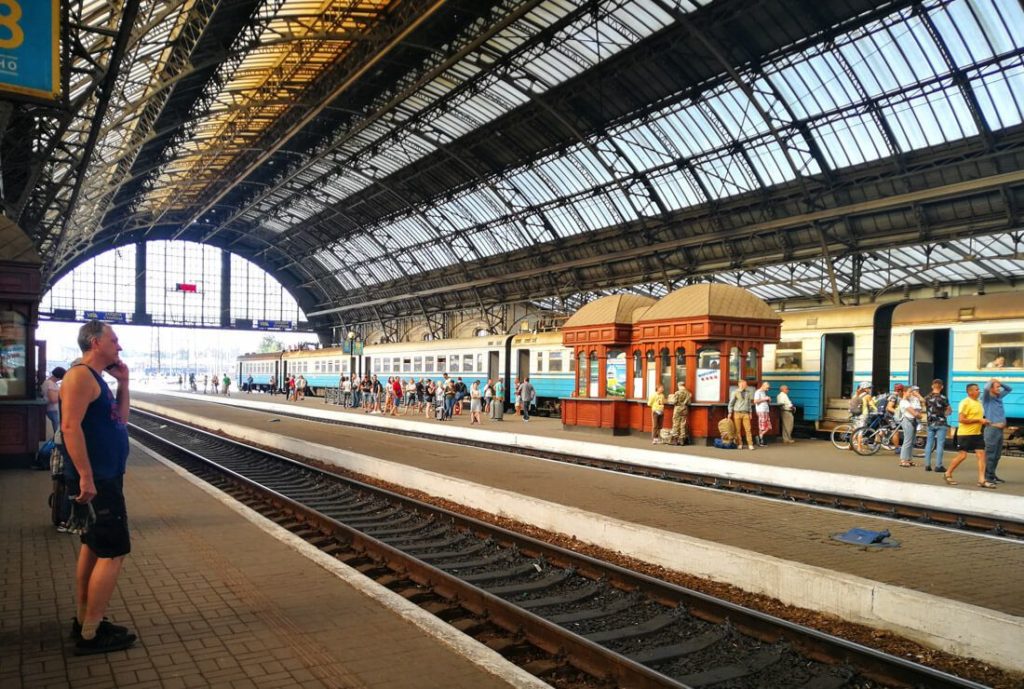
How to move around Lviv
Lviv is rather a small city and if you only have 1 or 2 days and stick to the main tourist sites, you won’t need to take any sort of transportation, as everything is within walking distance.
However, the coolest Soviet places are located at the city outskirts, a few kilometers away from the city center.
For that, you can either take the city bus or tram, on which, a single ticket costs 5UAH, around 15 cents.
For public transportation directions, check on Google Maps.

Where to stay in Lviv
Lviv is well-sorted for budget accommodation.
Backpacking Hostel – Park Plus Hostel – I stayed here one night and it’s a great hostel to meet other backpackers, plus the location and facilities are great.
Budget Apartments – In Lviv, there are more touristic apartments than hotels and they tend to be a very good value-for-money option.
Mid-range Hotel – Villa Stanislavskyi Hotel – Elegant rooms in a classic building. Not expensive for what you get.
5-star hotel – Grand Hotel Lviv – One of the best hotels in town.
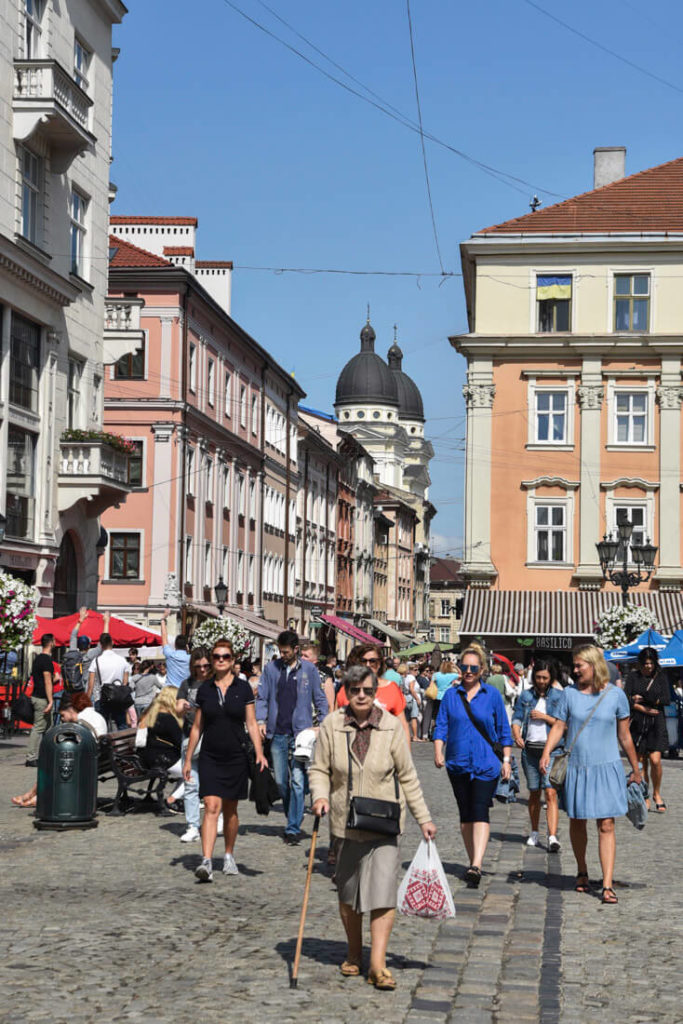
Places to visit in Lviv in a 3-day itinerary
Map of the places to see in Lviv
What to visit in Lviv on day 1: Stick to Old Lviv
Visit Lviv on a walking tour!
CLICK HERE TO LEARN MORE
The refined architecture Lviv is famous for, and the main reason it has become one of the most touristic destinations in Eastern Europe, is found in Lviv’s old town.
In Lviv Old Town, each and every door, balcony and facade has something to tell, something worthwhile to stare at, and the best you can do is stroll down the streets while stopping at the several stylish cafés, because Lviv also claims to be the first city to ever roast and brew the coffee bean, back when it belonged to the Austro-Hungarian Empire.

This is the reason why coffee in Lviv is particularly good and, as such, it has the largest offer of high-quality coffee spots in this part of Europe.
I recommend you start your visit at Rynok Square, the city’s main square, , where there is a story behind each and every building.

Old Lviv Highlights:
We won’t go through all the places to visit in Lviv’s Old Town, otherwise this would be an interminable article, but these are the main landmarks:
- Rynok Square – The social and economic center of Lviv.
- Lviv City Council – For a few hryvnia, you can climb the City Hall’s tower and get a panoramic view of the city.
- Shevchenko monument – Taras Shevchenko was a poet and writer whose literature is considered the foundation of modern Ukrainian literature. In Ukraine, many Lenin statues, especially in the Western part, have been replaced by Shevchenko and the one in Lviv is particularly pretty.
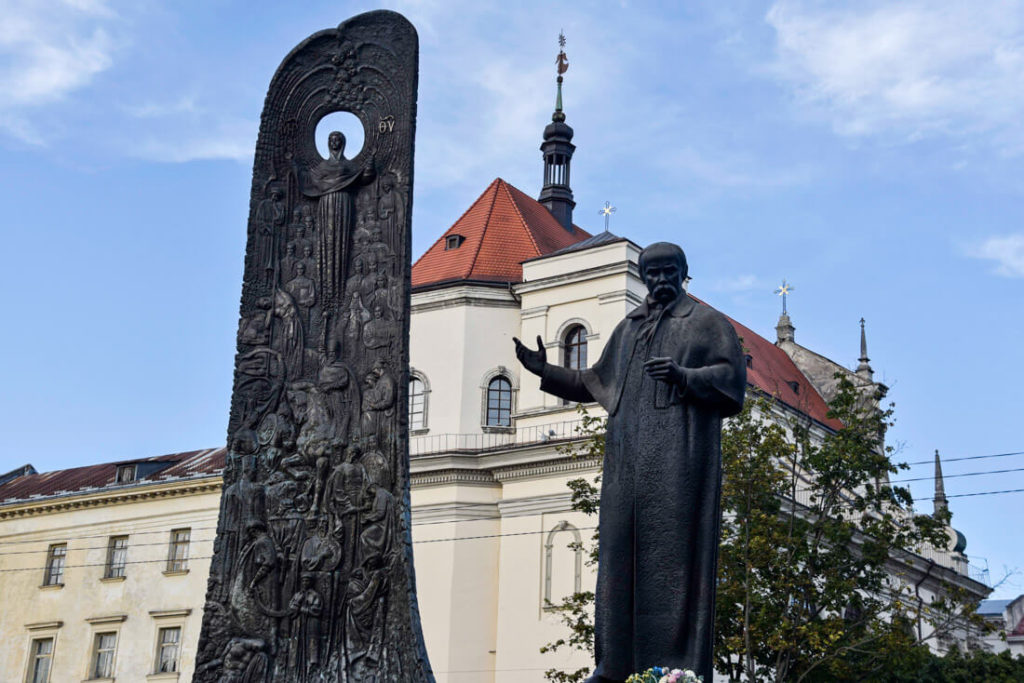
- Armenian Cathedral – One of the oldest churches in Lviv.
- Dominican Cathedral – A church from the 18th century and one of the most beautiful.
- Opera House – A Viennese masterpiece from 1900.

Best coffee places in Lviv Old Town:
As I said, coffee in Lviv is a big deal and the first place you need to visit is the Lviv Coffee Mining Manufacture, an old coffee brewery in whose underground cellar, coffee was literally mined. You can either visit the cellar or just have a regular coffee like in any other café.
More good coffee shops I used to go are:
- Black Honey
- Urban coffee
- White coffee
- Svit Kavy
Leopold von Sacher-Masoch and masochism
Mr. Sacher-Masoch was a writer born in Lviv, infamous for writing romantic novels where he expressed his masochistic fantasies. Basically, he was the inventor of the masochism concept, a term named after him by a German psychiatrist Richard von Krafft-Ebing. Masoch is actually adored by Ukrainians from Lviv and one of the best things you can do in Lviv is going for drinks at Masoch café, a masochist-themed pub where clients get constantly whipped by the waiters and waitresses while having drinks. It’s a very touristic spot but fun is guaranteed, especially at late night, when everybody is drunk. We had so much fun in this bar and stayed until they kicked us out.
WATCH THIS MASOCH CAFÉ VIDEO!
What to visit in Lviv on day 2: Old Lviv
Jewish sites in Lviv
When you travel to Lviv, I believe it is very important to learn about Jews because, prior to 1941, around 45% of Lviv’s population were Jews.
In 1943, their population was less than 900.
Jews have inhabited Lviv since the 16th century and they all occupied a significant part of the old town, around Rynok Square.
Near Rynok Square, you find a 15th Century Synagogue named Golden Rose, which was destroyed by the Nazis in 1941, leaving only some ruined walls behind. Today they have turned it into a memorial.
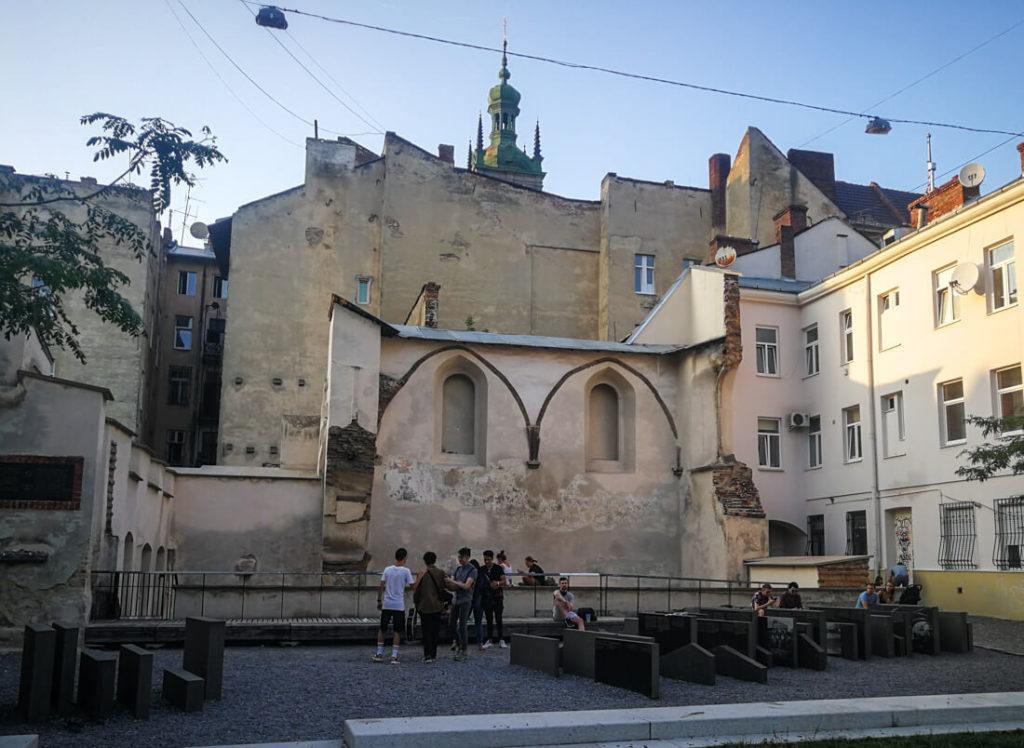
Something about Lviv which I had no idea of is that, during WWII, this was home to one of the largest Jewish ghettos in Europe, hosting 120,000 people who were later killed by the Nazis, except for the aforementioned 900.
Today, the ghetto is nothing more than a middle-class neighborhood. I rented an apartment there for 2 weeks and besides a welcoming local market, there was the Territory of Terror Memorial Museum, a memorial dedicated to the victims of the Jewish ghetto, featuring massive portraits of survivors, with their respective bios.
Right across the street, you find a modern-art monument also dedicated to those victims.
The center of the ghetto is along Dzherelna street.
If you are interested in the Jewish part of Lviv, there is a great guided tour
CLICK HERE TO LEARN MORE
Lviv Brewing Museum
Beer in this city is as important as coffee and Lviv Brewery used to be one of the most important breweries in the whole Austro-Hungarian Empire.
If you like beer, I am sure you will enjoy this 1-hour visit which also includes some beer tasting. To be very honest, the museum itself is nothing special but tasting a different set of beers at 11am doesn’t come without its own fun.
Take a beer tasting tour in Lviv!
CLICK HERE TO LEARN MORE

National Museum and Memorial to the Victims of Occupation
For me, this museum is a must visit in Lviv, a former prison used throughout the 20th century by the Poles, the Nazis and the Soviets. Inside, you can check out the cells, some propaganda posters and different exhibitions of all the atrocities.
The only downside is that most information is only in Russian, or Ukrainian, I am not sure which.
Lychakivskiy Cemetery
Weirdly, one of the most popular attractions to visit in Lviv is a cemetery, but it’s a special one.
The people resting under those extravagant Gothic graves and gargoyles, are famous aristocrats, writers and Soviet soldiers from the region.
Ivano Franco is buried here as well.
The yard of lost toys
Very close to the Old City, you find this quirky museum made of old toys collected by a local resident.

What to visit in Lviv on day 3 – Full Soviet tour!
Interested in taking a guided Soviet tour in Lviv?
CLICK HERE TO LEARN MORE
Against the Compass readers, which refers to intrepid, urban explorers interested in offbeat stuff, will enjoy their third day in Lviv very much, since it is about exploring some of its finest Soviet relics.
Although Lviv only became part of the USSR after WWII, there is plenty of this stuff.
Related: Tbilisi travel guide (with offbeat stuff included)
Lviv State Circus
Every city in former USSR has its particular Soviet Circus and the one in Lviv is so easy to reach.

Abandoned Ukrvino Wine Factory
Within a walking distance from Lychakivskiy Cemetery, you find an abandoned winery that features some great murals from the Soviet 80s.

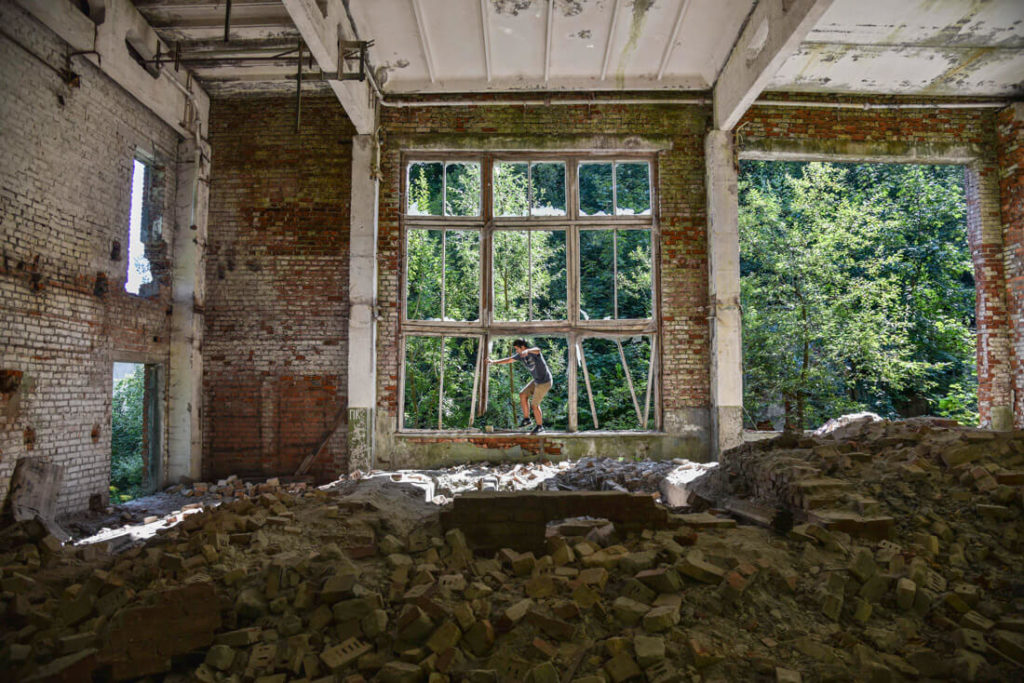
Monument to the War Glory of the Soviet Army
This monument commemorates the victory of the USSR during WWII, or the Great Patriotic War, as they like to say.
Unfortunately, in an attempt to get rid of all Soviet symbols, they built a tall fence around it that makes taking photos of it a bit challenging, as you need to climb over a statue located just outside of it.

State Fiscal Department Lviv Oblast
The regional Tax Department is a massive 12-story concrete building from the 80s.
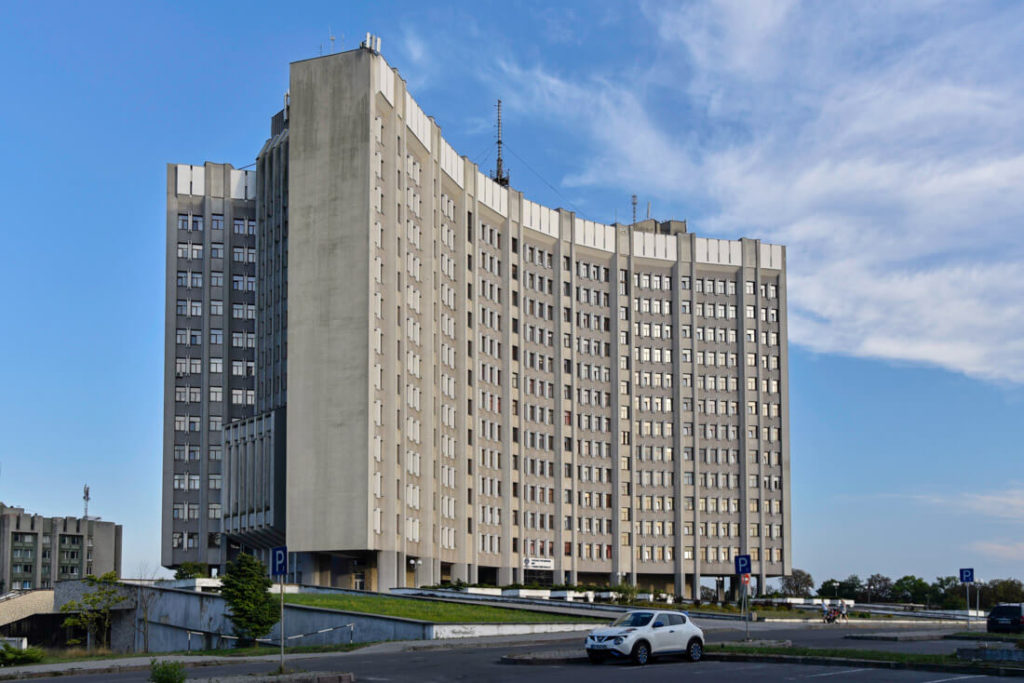
Abandoned auditorium
An auditorium from the Soviet era which, more than abandoned, was never finished.
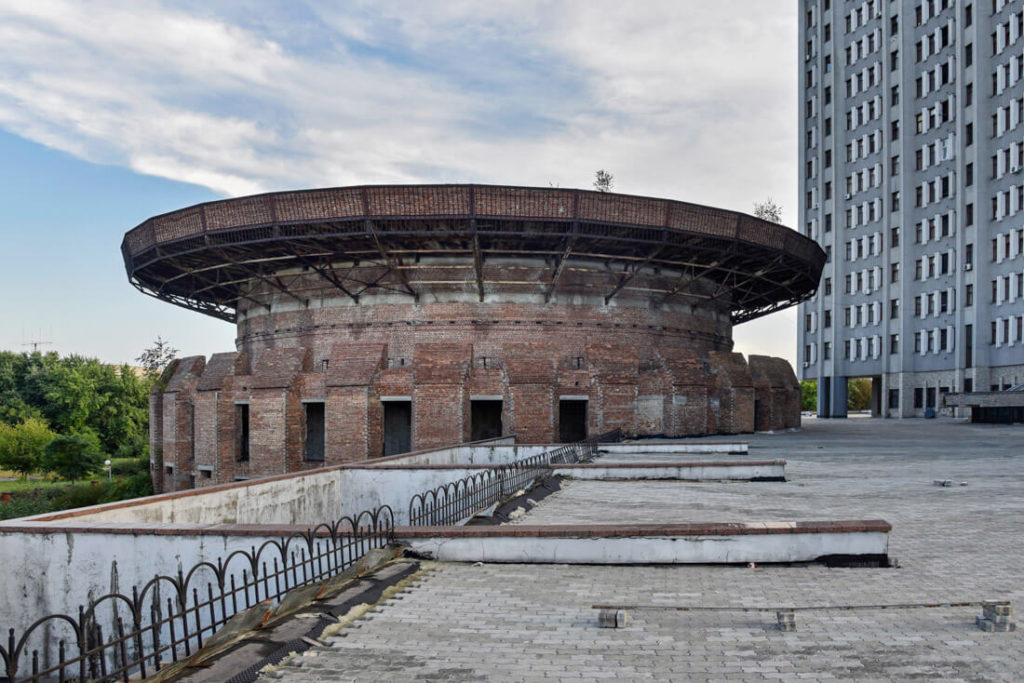
Stryiska Bus Station
Built in the 70s, this is one of the finest examples of Soviet Modernism in Lviv.
By the way, here is where I took the bus going to Ternopil.
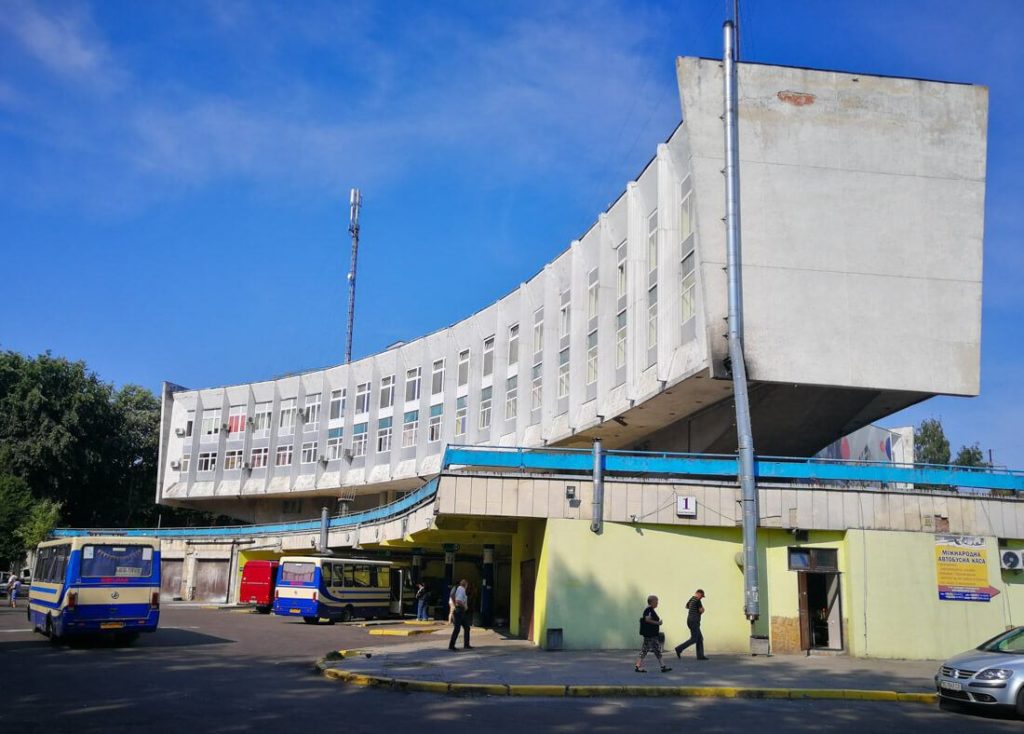
Leona Tech building and the Bus Factory
A massive concrete building and an actual bus factory whose walls feature a pretty cool Socialist bas relief.
If you want to keep exploring offbeat Lviv, check this post from Kathmandu & Beyond, which actually helped me find some of these places, so big thanks to them.


More information for visiting Lviv
📢 In my Travel Resources Page you can find the list of all the sites and services I use to book hotels, tours, travel insurance and more.
Don’t forget to check our travel guide to Ukraine.
As well as all our Ukraine articles:
Here’s hoping you found this Lviv travel guide useful. If you have any question or suggestion, please let us know in the comments section.
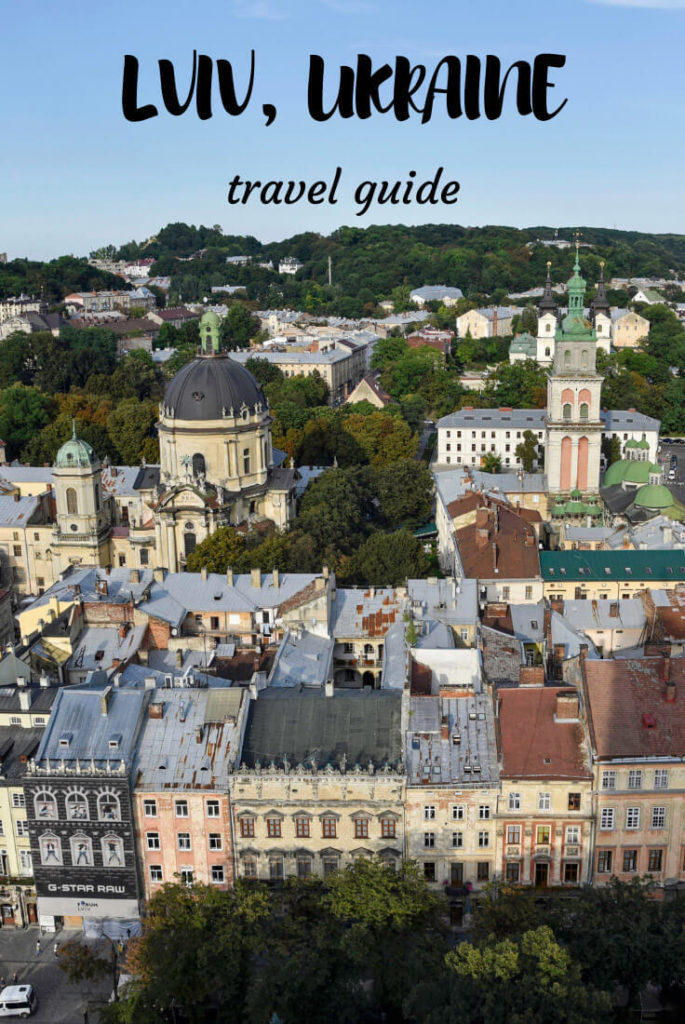
2 comments
Lviv is such a wonderful city. Very welcoming, beautiful, historically interesting, and quite affordable……and, oh yes, delicious. Spent 4 nights there and will go back for a longer stay post pandemic. All 4 grandparents were from the area between Aviv and
Her look ( Kozova, Bethany, Rhizdviany). I heard many stories from.them about the area when I was a child in the 1950s growing up outside of New York City. First visit there in 2019 was very moving and meaningful. Thanks for your wonderful overview.
Many thanks for writing about our incredible city! Lviv is still relatively untouched by the mass tourism that is slowly but surely putting old European cities under so much stress. Lviv thus far (as of today, November 20th, 2024) has avoided most of that although property developers are rampant in our Soviet suburbs and a degree of gentrification is creeping in to our historic centre 🙁 It’s really important for travellers to visit Lviv as soon as possible before we end up like Krakow, for example. Yes, war continues and there will be an element of risk but stick to the rules and you’ll be fine! Ps. Dzherelna, behind Forum Lviv, was not the de facto centre of the Jewish ghetto, but the bridge there is next to former Nazi supply and armaments buildings from back in 1941-1944, some of which are still there and the surrounding wall is original, unchanged. The main ghetto was on the other side of Chornovola, behind new development “Mill Town”. They built over the Jewish ghetto hospital, in fact. lvivholocaust.com could be interesting.